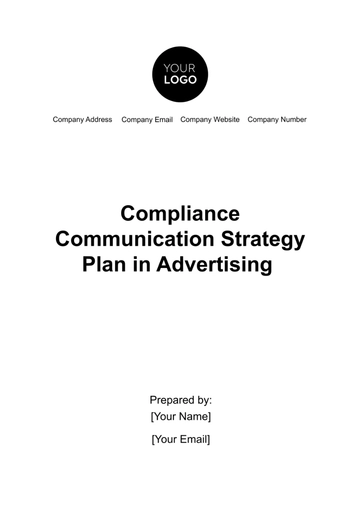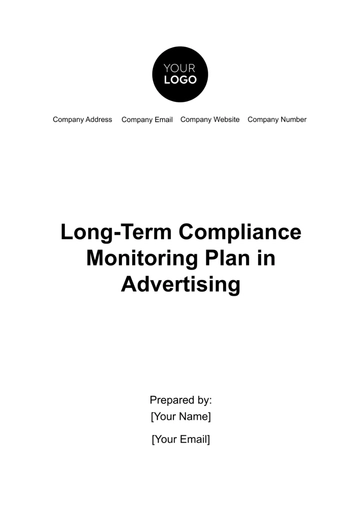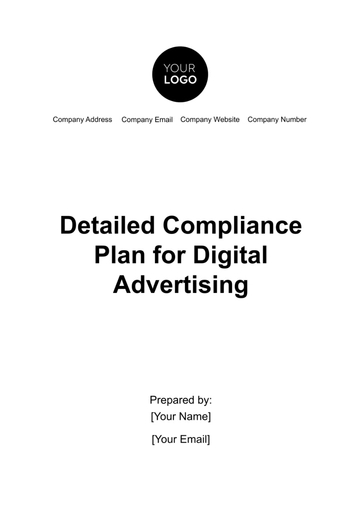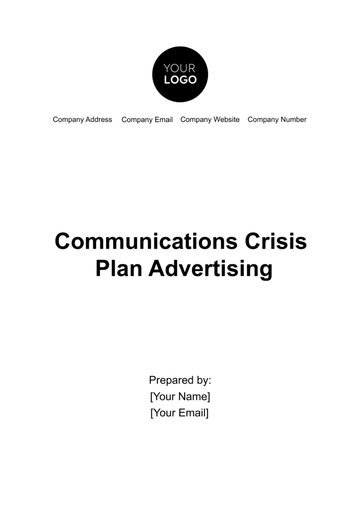Free Crisis Communication Advertising Plan

I. Crisis Assessment and Identification
Effective crisis management begins with a swift and accurate assessment of the situation. It's critical to classify the crisis type—be it PR, legal, or financial—and understand its scope. For instance, a data breach (PR and Legal) would require a different approach compared to financial misreporting.
A. Identifying the Nature of the Crisis
Our crisis management team, led by [Your Name], will assess the crisis for immediate classification and scope determination.
B. Assessing Immediate Impacts
The impact on brand reputation and customer trust is gauged. For example, in a product recall scenario, customer trust is paramount.
C. Initial Response Coordination
Setting up a crisis management team and establishing clear communication channels, including an emergency contact list, is the first step.
II. Strategic Communication Planning
Developing a communication strategy that is transparent and empathetic is crucial.
A. Developing Key Messages
Crafting messages that are clear and factual is vital. For example, in a service outage, providing accurate and timely information to customers is essential.
B. Selecting Appropriate Communication Channels
Choosing the right channels, such as social media for immediate reach and press releases for official statements, is key.
C. Timing and Frequency of Communications
Immediate response, followed by regular updates, is crucial. For instance, hourly updates in the first 24 hours of a crisis can be effective.
III. Internal Communication and Team Mobilization
Ensuring the internal team is informed and aligned is as important as external communication.
A. Informing Internal Stakeholders
Regular updates to employees and board members help maintain internal confidence and consistency in external messaging.
B. Coordinating with Internal Departments
The marketing and legal teams must work in tandem to ensure messaging is both effective and compliant.
C. Training and Briefing for Spokespersons
Preparing spokespeople with consistent messaging and media training, particularly for high-visibility crises, is essential.
IV. Public Engagement and Response Handling
Engaging with the public and managing responses is a delicate balance of empathy and accuracy.
A. Engaging with Media and Public
Organizing press conferences and media interviews to address the crisis head-on, led by [Your Name].
B. Managing Social Media and Online Presence
Actively monitoring and responding to social media to manage public sentiment and address concerns.
C. Addressing Customer Feedback and Concerns
Implementing customer service protocols to handle inquiries and complaints with transparency and empathy.
V. Monitoring and Adjusting Strategies
Continuous assessment of the strategy's effectiveness and making necessary adjustments is key to crisis management.
A. Continuous Monitoring of Public Sentiment
Using tools like social media analytics and media coverage reviews to gauge public reaction and adjust strategies accordingly.
B. Adapting Communication Tactics
Modifying messages based on public feedback and adjusting communication frequency to suit the evolving nature of the crisis.
C. Reporting and Feedback to Management
Providing regular updates and feedback to [Your Name] and the leadership team for decision-making.
VI. Post-Crisis Analysis and Learning
Post-crisis, it's crucial to evaluate the response effectiveness and implement changes for future preparedness.
A. Evaluating the Crisis Response
Assessing the effectiveness of the communication strategy and identifying areas for improvement.
B. Implementing Changes for Future Preparedness
Updating crisis management plans and conducting training sessions for team members.
C. Rebuilding Brand Image and Trust
Developing long-term communication strategies and ongoing stakeholder engagement to rebuild trust and brand image.
- 100% Customizable, free editor
- Access 1 Million+ Templates, photo’s & graphics
- Download or share as a template
- Click and replace photos, graphics, text, backgrounds
- Resize, crop, AI write & more
- Access advanced editor
Elevate your crisis communication strategies with the Crisis Communication Advertising Plan Template from Template.net. This editable and customizable template, powered by our Ai Editor Tool, equips you with the tools needed to craft effective advertising plans during challenging times. Trust Template.net for innovative solutions in communication planning.
You may also like
- Finance Plan
- Construction Plan
- Sales Plan
- Development Plan
- Career Plan
- Budget Plan
- HR Plan
- Education Plan
- Transition Plan
- Work Plan
- Training Plan
- Communication Plan
- Operation Plan
- Health And Safety Plan
- Strategy Plan
- Professional Development Plan
- Advertising Plan
- Risk Management Plan
- Restaurant Plan
- School Plan
- Nursing Home Patient Care Plan
- Nursing Care Plan
- Plan Event
- Startup Plan
- Social Media Plan
- Staffing Plan
- Annual Plan
- Content Plan
- Payment Plan
- Implementation Plan
- Hotel Plan
- Workout Plan
- Accounting Plan
- Campaign Plan
- Essay Plan
- 30 60 90 Day Plan
- Research Plan
- Recruitment Plan
- 90 Day Plan
- Quarterly Plan
- Emergency Plan
- 5 Year Plan
- Gym Plan
- Personal Plan
- IT and Software Plan
- Treatment Plan
- Real Estate Plan
- Law Firm Plan
- Healthcare Plan
- Improvement Plan
- Media Plan
- 5 Year Business Plan
- Learning Plan
- Marketing Campaign Plan
- Travel Agency Plan
- Cleaning Services Plan
- Interior Design Plan
- Performance Plan
- PR Plan
- Birth Plan
- Life Plan
- SEO Plan
- Disaster Recovery Plan
- Continuity Plan
- Launch Plan
- Legal Plan
- Behavior Plan
- Performance Improvement Plan
- Salon Plan
- Security Plan
- Security Management Plan
- Employee Development Plan
- Quality Plan
- Service Improvement Plan
- Growth Plan
- Incident Response Plan
- Basketball Plan
- Emergency Action Plan
- Product Launch Plan
- Spa Plan
- Employee Training Plan
- Data Analysis Plan
- Employee Action Plan
- Territory Plan
- Audit Plan
- Classroom Plan
- Activity Plan
- Parenting Plan
- Care Plan
- Project Execution Plan
- Exercise Plan
- Internship Plan
- Software Development Plan
- Continuous Improvement Plan
- Leave Plan
- 90 Day Sales Plan
- Advertising Agency Plan
- Employee Transition Plan
- Smart Action Plan
- Workplace Safety Plan
- Behavior Change Plan
- Contingency Plan
- Continuity of Operations Plan
- Health Plan
- Quality Control Plan
- Self Plan
- Sports Development Plan
- Change Management Plan
- Ecommerce Plan
- Personal Financial Plan
- Process Improvement Plan
- 30-60-90 Day Sales Plan
- Crisis Management Plan
- Engagement Plan
- Execution Plan
- Pandemic Plan
- Quality Assurance Plan
- Service Continuity Plan
- Agile Project Plan
- Fundraising Plan
- Job Transition Plan
- Asset Maintenance Plan
- Maintenance Plan
- Software Test Plan
- Staff Training and Development Plan
- 3 Year Plan
- Brand Activation Plan
- Release Plan
- Resource Plan
- Risk Mitigation Plan
- Teacher Plan
- 30 60 90 Day Plan for New Manager
- Food Safety Plan
- Food Truck Plan
- Hiring Plan
- Quality Management Plan
- Wellness Plan
- Behavior Intervention Plan
- Bonus Plan
- Investment Plan
- Maternity Leave Plan
- Pandemic Response Plan
- Succession Planning
- Coaching Plan
- Configuration Management Plan
- Remote Work Plan
- Self Care Plan
- Teaching Plan
- 100-Day Plan
- HACCP Plan
- Student Plan
- Sustainability Plan
- 30 60 90 Day Plan for Interview
- Access Plan
- Site Specific Safety Plan





























